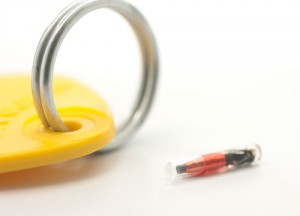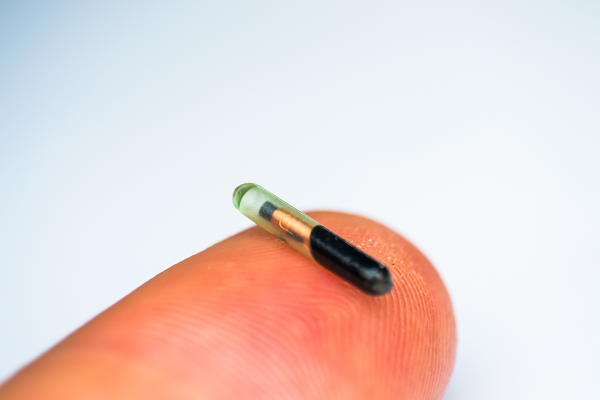

Microchipping can be a valuable tool in helping recover your pet should they ever get out of your house or yard. Collars and identification tags are great but they can break off or become damaged and may not be available to provide your information to anyone who finds your pet.
A microchip is a form of permanent identification. These microchip implants are called radio frequency identification (RFID) tags. They are tiny, about the size of a large grain of rice, and are passive, which means that they passively store a unique identification number and do not actively transmit any information.
The microchip implanted in your dog has no battery and no internal power source; it sits inertly in the dog until it is read by a microchip scanner.
How are microchips put in my pet?
Microchips come to us in a sterile package with an identification number already associated with it. This number is specific to the pet who is microchipped and we scan it prior to placing it in your pet to ensure it registers.
The microchip placement is under the skin between the shoulder blades using a needle that is larger than your typical vaccine needle. Once inserted, we scan the chip again to ensure it is reading properly.
For puppies we recommend doing it while they are being spayed or neutered since they will already be sedated. For older pets, we can do it at their exam.
What do I do once my pet is chipped?
Nothing! We will register the microchip for you with the chip company. All you would have to do is update them should you ever change your address, phone number, or email.
Learn more about the recovery process if your pet goes missing by clicking HERE.
